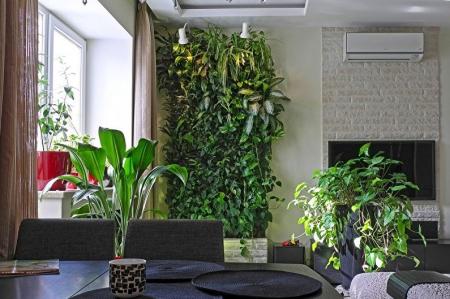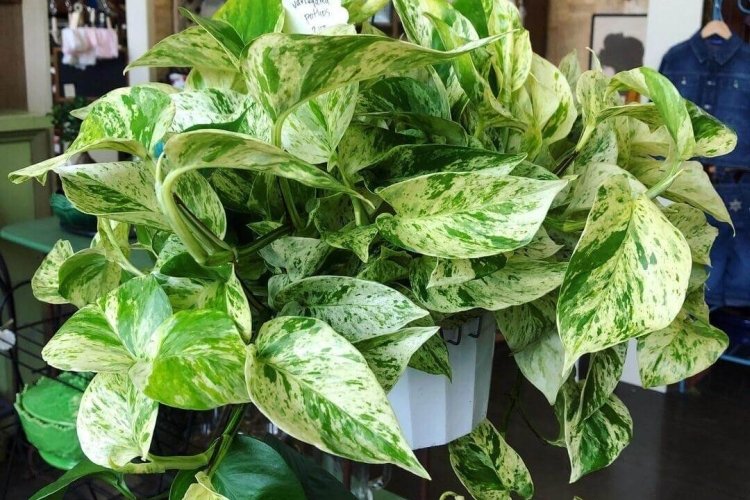
If you like beautiful decorative vines, be sure to pay attention to the scindapsus. It perfectly braids the supports, hangs from the planter and creates whole green walls. Scindapsus grows quickly, is not too capricious and impresses with a variety of colors. Let’s tell you more!
general information
Scindapsus is a spectacular green vine with all its characteristic features. It is often confused with ivy and is readily grown in apartments and offices. Scindapsus fills the room with a sense of coziness and perfectly cleans the air.
In nature, the vine grows much larger and clings to trees. At home, she also needs support, but she will grow much smaller. Long stems up to 2-3 m densely covered with large leaves. Most often they are not monochromatic – with stains, strokes and patterns.
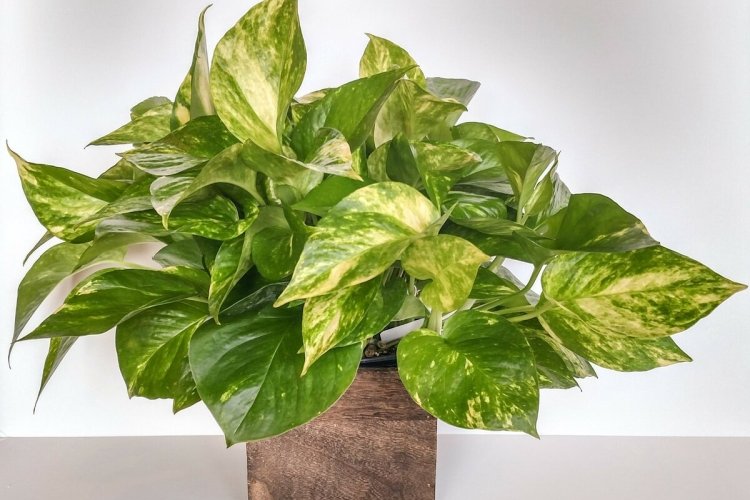
Types of scindapsus
There are about 30 types of scindapsus, and among themselves they differ mainly in the color and shape of the leaves. Consider those that can be grown at home.
Scindapsus Pictus
Curly vine that perfectly wraps around any support. Shoots grow up to 2.5 m, and the size of the leaves reaches 15 cm in length. Pictus has a very beautiful green-silver color.
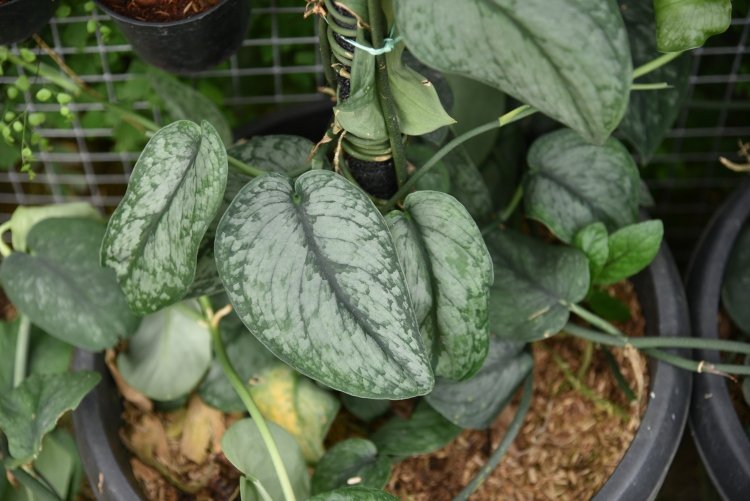
Scindapsus Neon
Its bright light green leaves really seem to be neon, and as if they should glow in the dark. Scindapsus Neon is a fast growing species, so it requires regular pruning.
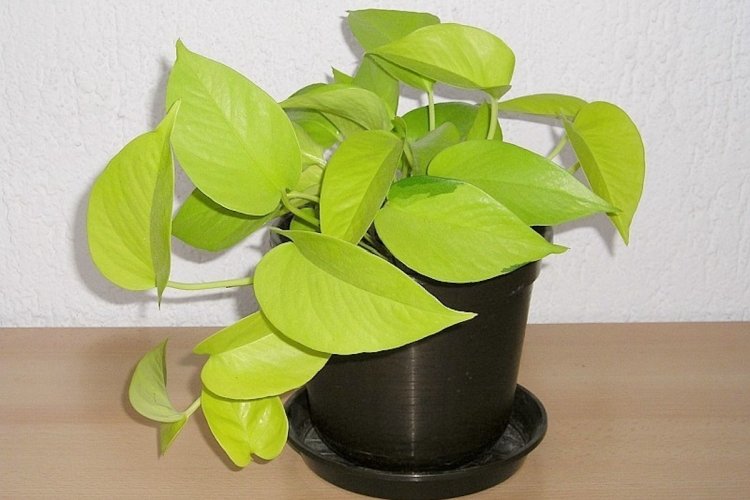
Golden scindapsus
It has beautiful, heart-shaped leaves of an emerald hue with golden streaks. At home, vine shoots grow up to 2 m. This species is the most sensitive to diseases and pests.
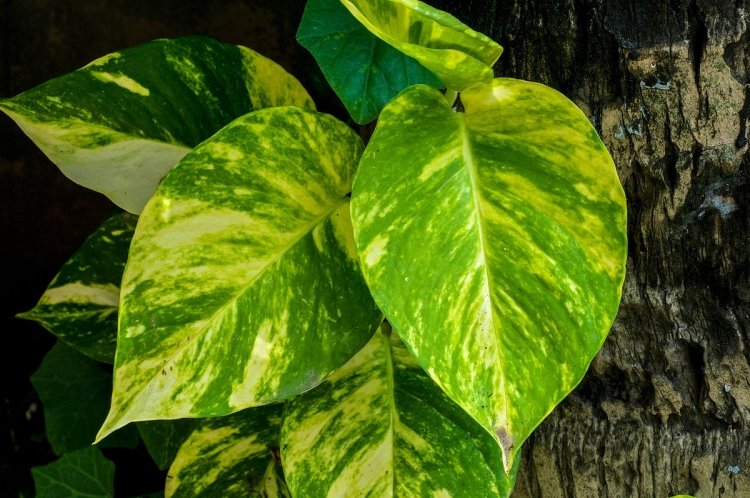
Scindapsus Marble Queen
A luxuriously beautiful liana with marble leaves, randomly painted in green and white. It is impossible to find even two plates with the same pattern.
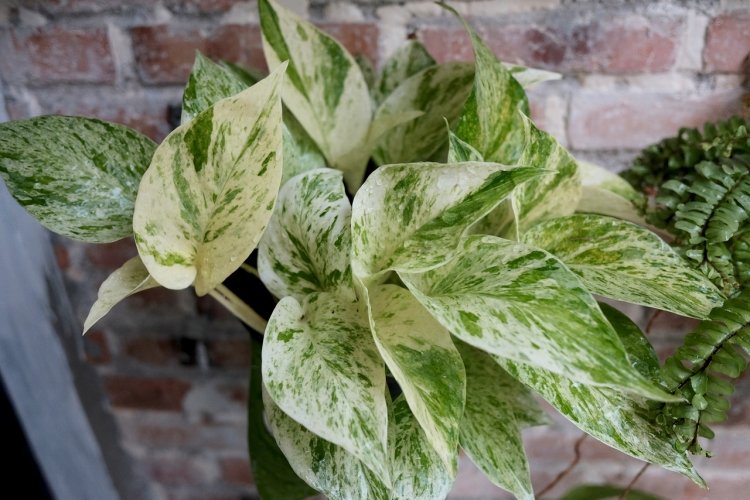
Scindapsus Ange
It is a beautiful ornamental variety and is best grown in hanging planters. It is most often found in greenhouses, but is gradually becoming more popular in apartments. This is due to the compactness of the neat vine.
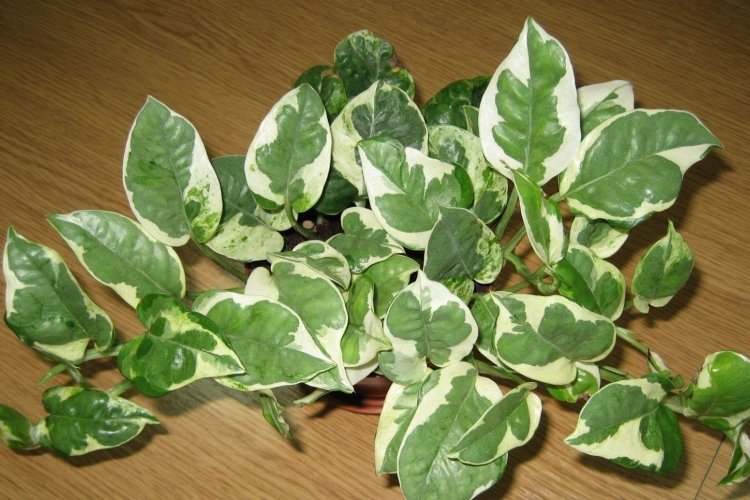
Scindapsus Exotic
A breeding hybrid that has an atypical leaf shape. The fact is that it is asymmetrical, and one half is distinctly larger than the other.
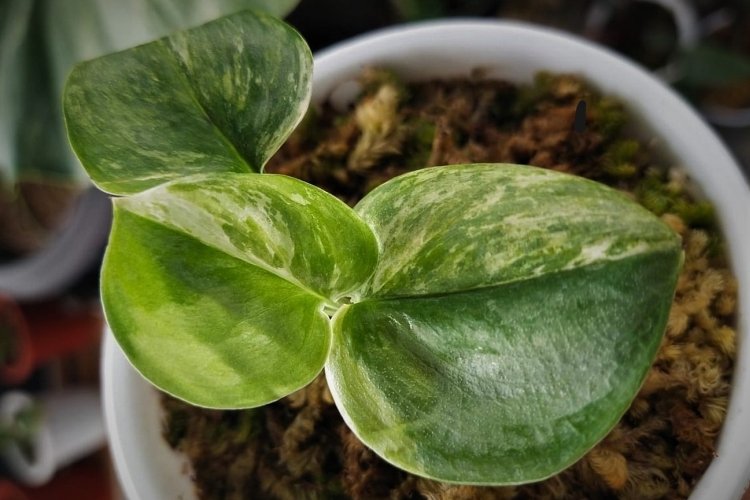
Climbing indoor plants (80 photos): types and care
Scindapsus care
Scindapsus is not the best plant for beginners, but it is still very unpretentious. If you immediately create comfortable conditions for him, he will not cause trouble in the future!
Temperature
The most comfortable temperature for scindapsus is 18-20 degrees. If it rises higher, be sure to spray the plant. In winter, you cannot lower it below 16 degrees, but at the same time, do not put the scindapsus near heating appliances and in a draft.
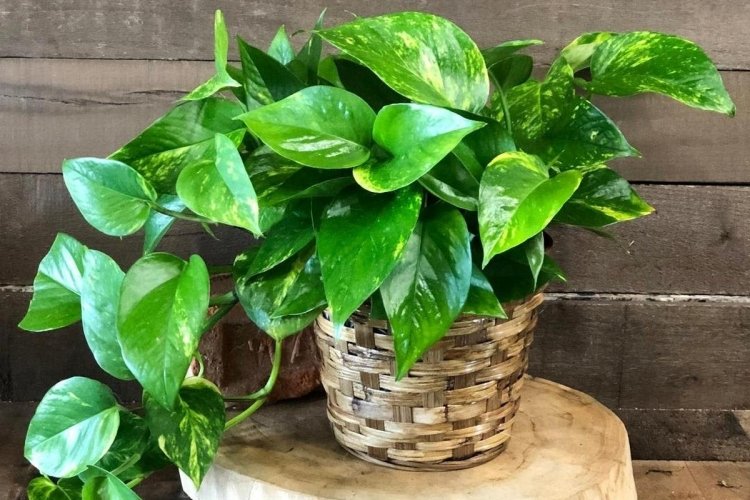
Lighting
Lighting requirements depend on the particular cultivar, in particular the color of the leaves. Variegated varieties need more light, but they do not tolerate direct rays well. Monochrome can grow even in partial shade.
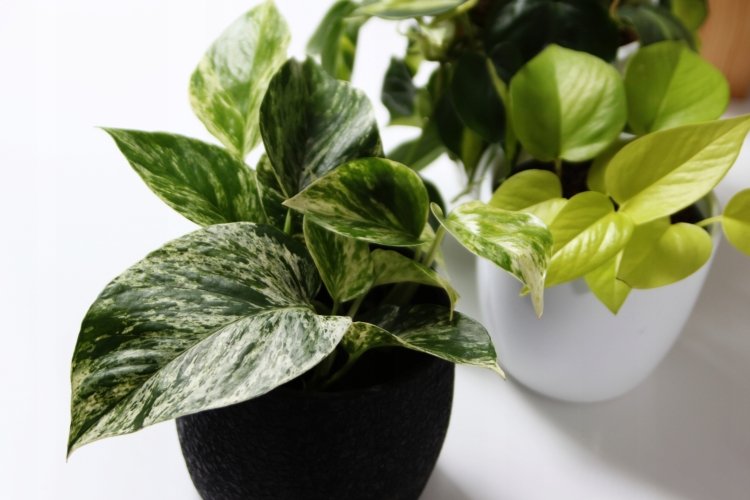
Watering
In summer, the scindapsus is watered every other day, and the younger the plant, the more moisture it needs. The main thing is that the water does not stagnate, otherwise the roots will begin to rot, but good drainage helps from this. If drops began to appear on the leaves, watering should be reduced, because this is how the vine gets rid of excess moisture.
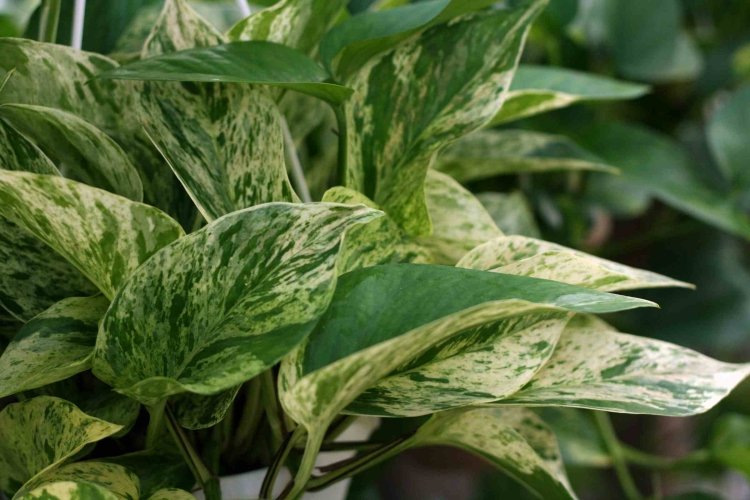
The soil
Scindapsus prefers a mixed leafy substrate. Add sand, peat, humus and a baking powder like perlite to it. The soil must be loose and light, optimally slightly acidic.
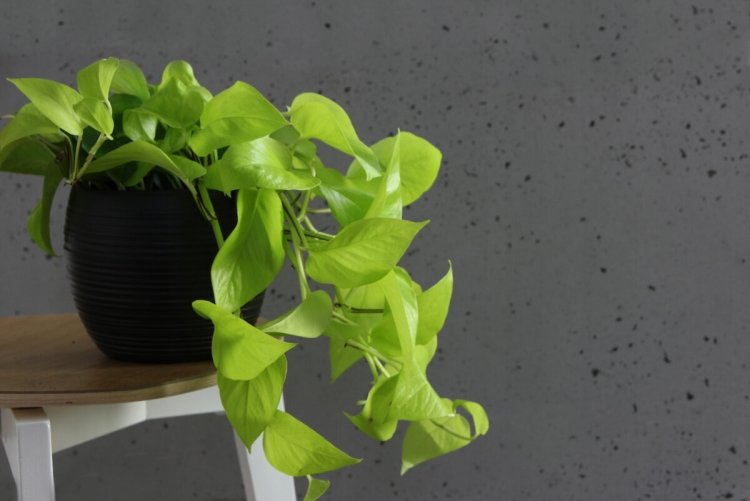
Fertilizers and feeding
To feed the scindapsus, use complex fertilizers for deciduous plants or vines. In general, almost any mixture that is applied every 2-3 weeks will do. For mature plants with long stems even less often – once a month.
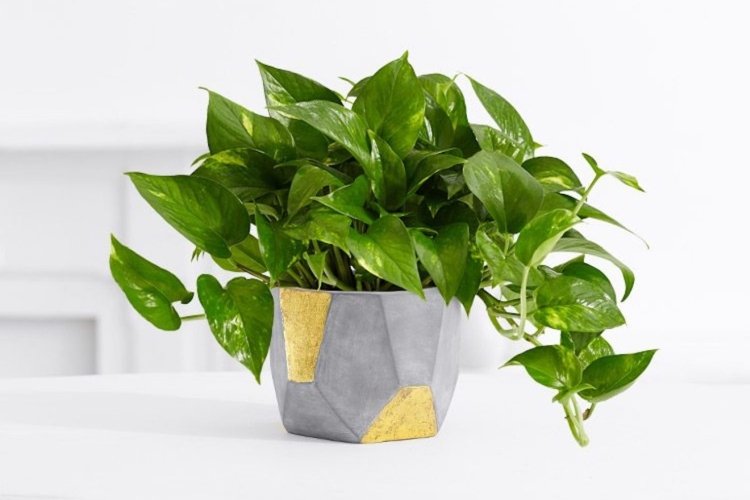
Pruning
The liana must be cut off, because in a year it can grow by almost 0.5 m. To make the bush beautiful and neat, remove all unnecessary processes. Use special arches and pipes as support.
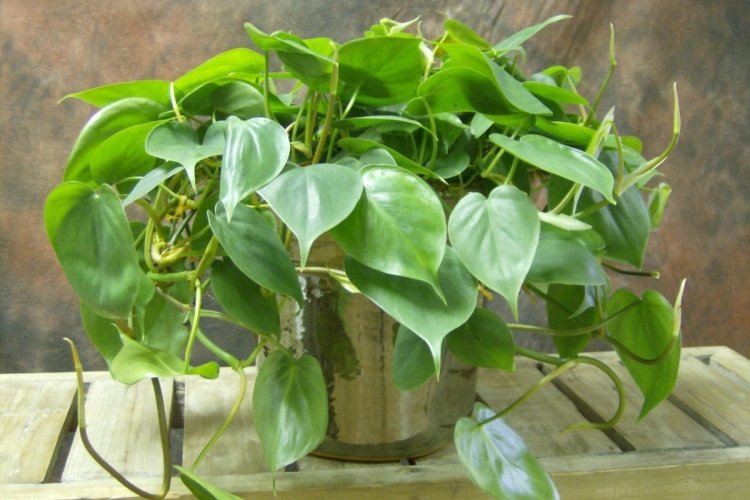
Transfer
A young scindapsus will have to be transplanted every year, but an adult – less often. It is best to do this at the end of winter. Due to the structure of the root system, choose a low and wide, stable pot.
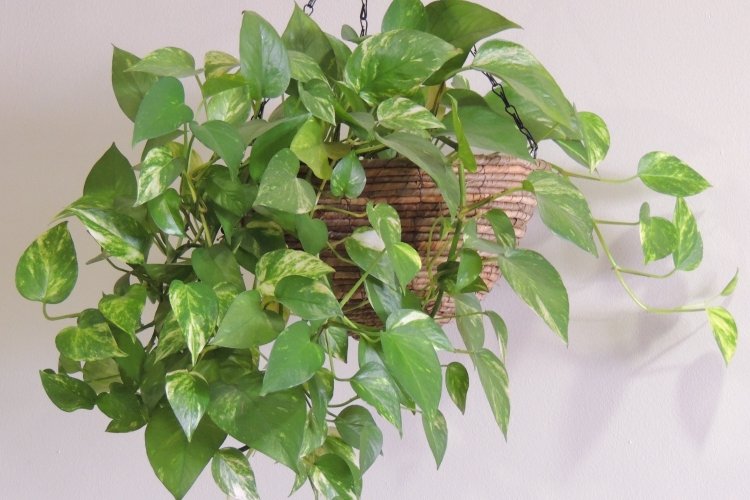
Hamedorea (50 photos): types, cultivation and care at home
Reproduction and planting of scindapsus
Aerial roots are actively growing on the shoots of scindapsus, so they can be safely used instead of layering. Just dig such a stem into another pot, fix it and wait for it to take root. Then cut off the layers and take the new plant to its permanent place.
Apical cuttings that remain after pruning are also suitable for rooting. They can be rooted in water, but it is more convenient immediately in the soil. Each cuttings should have 2-3 leaves, and in warmth and with sufficient light, they will soon become overgrown with roots.
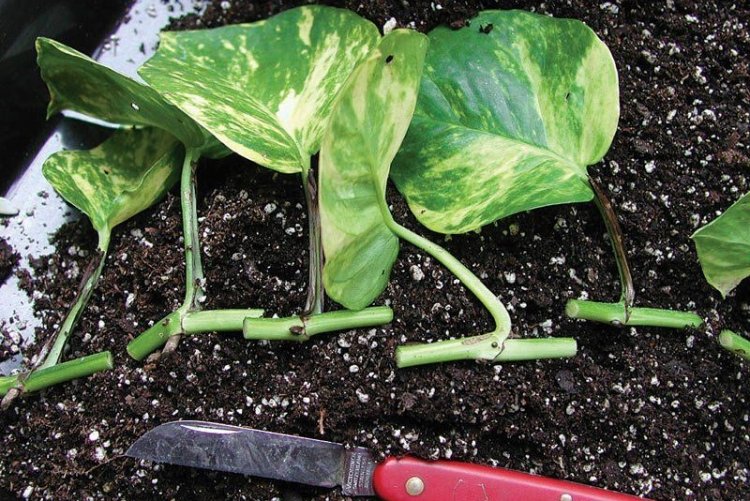
Pest and disease control
Due to the dry air, the leaves curl and dry, so place trays of wet expanded clay and spray the vine. But from an excess of moisture, the shoots begin to rot, as well as from too low a temperature. Then the scindapsus needs to be transplanted, cut and dried.
Fungal diseases are the most common scindapsus problem. All moisture-loving plants encounter it. There is only one rule here – remove all damaged areas and use fungicides. And in the future, adjust the temperature and humidity conditions.
Scindapsus quite often suffers from pests. Especially – from spider mites and scale insects. Gently wipe the leaves with alcohol or soapy water, and remove the parasites as much as possible with a cotton pad. Then use insecticides.
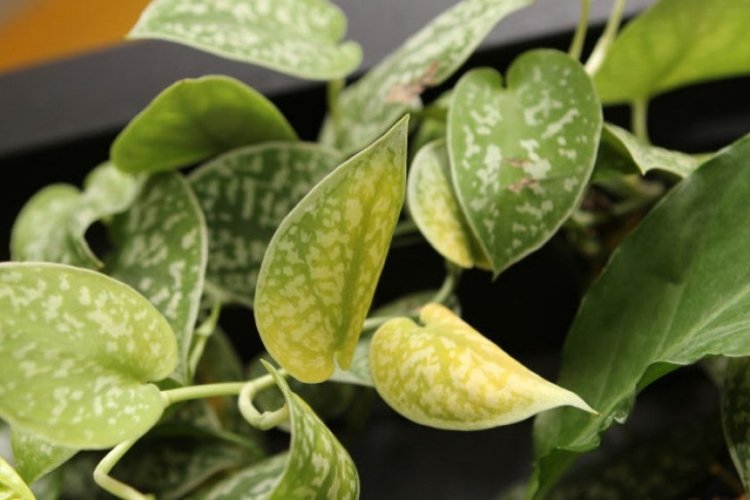
Date palm (50 photos): types, care and cultivation at home
Scindapsus – photo
In this gallery, we have collected for you the most beautiful photos of an amazing scindapsus. How can you resist him?
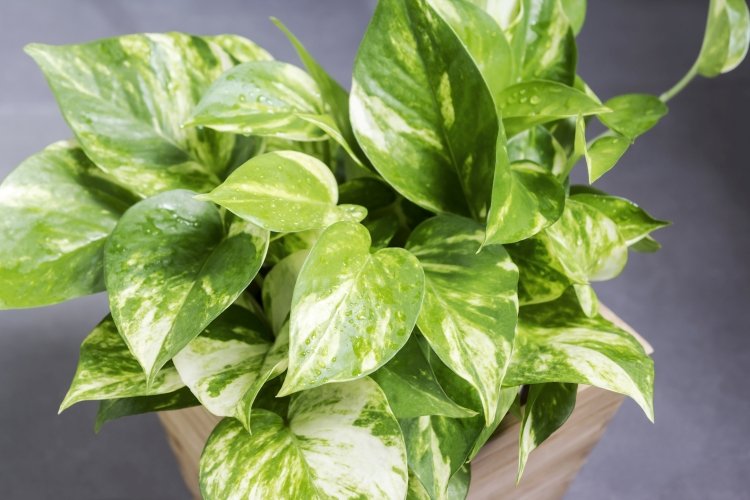
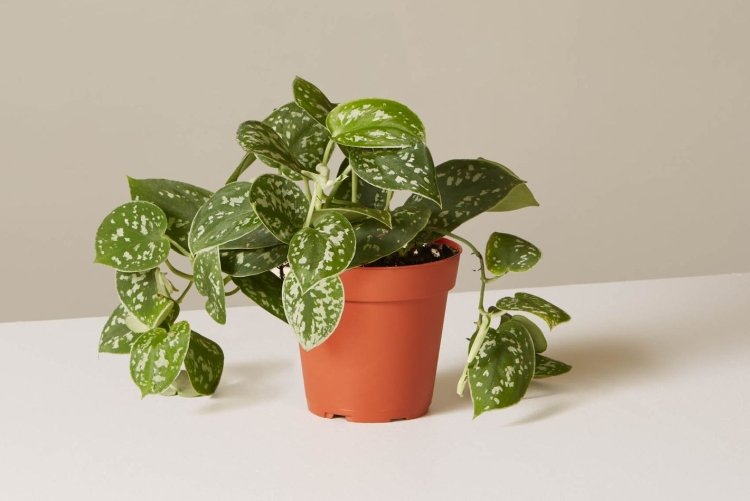
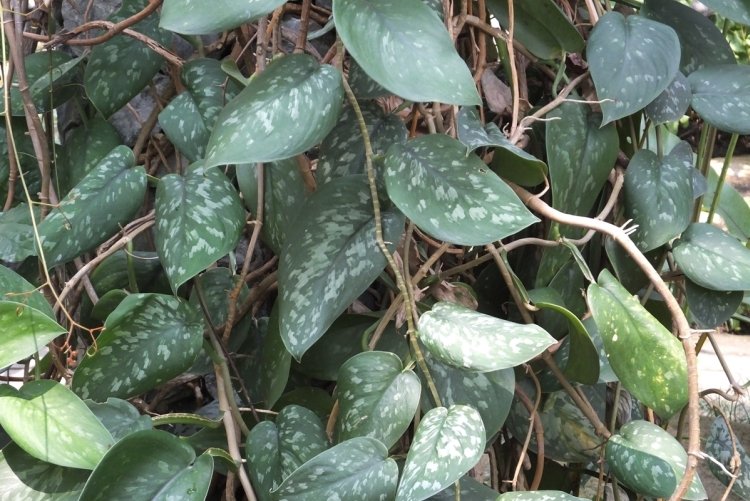
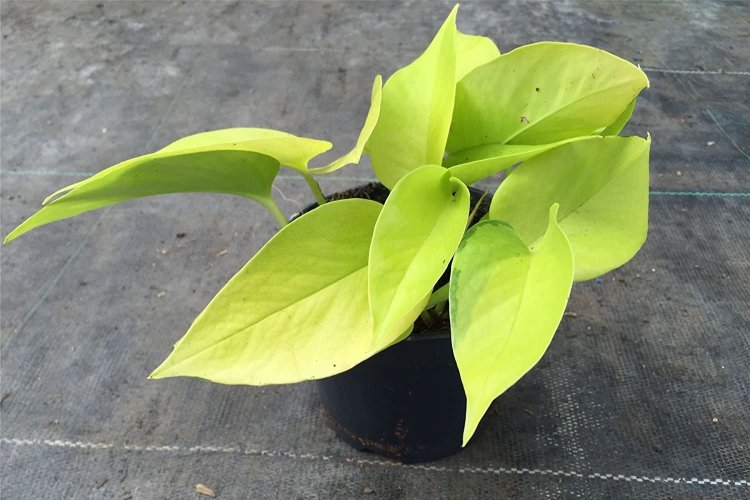
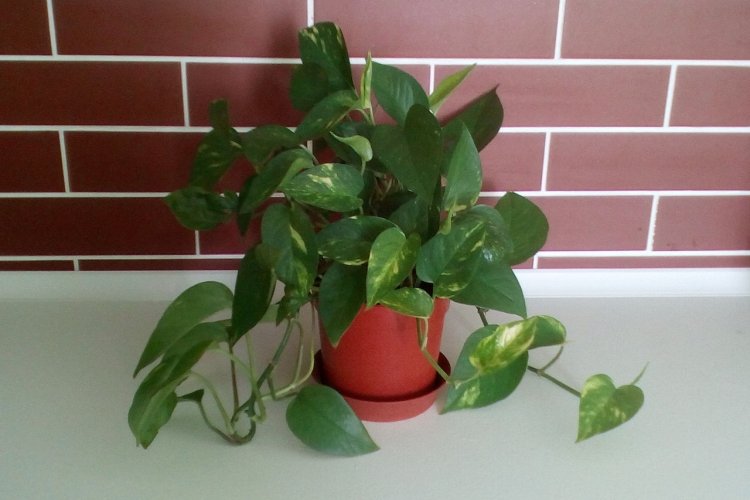
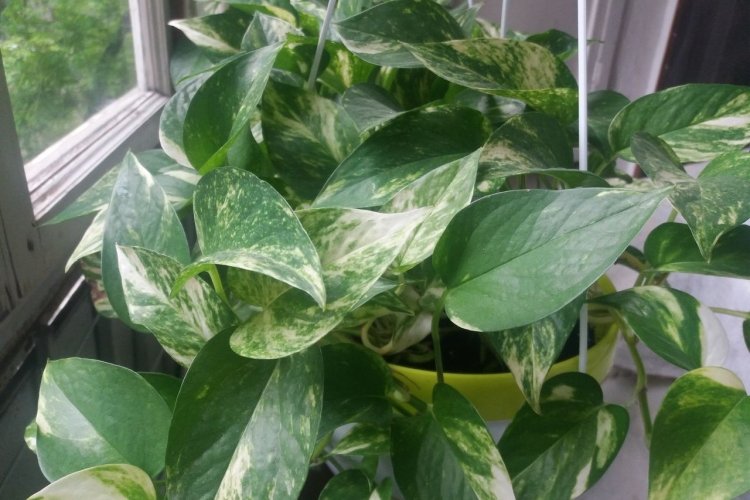
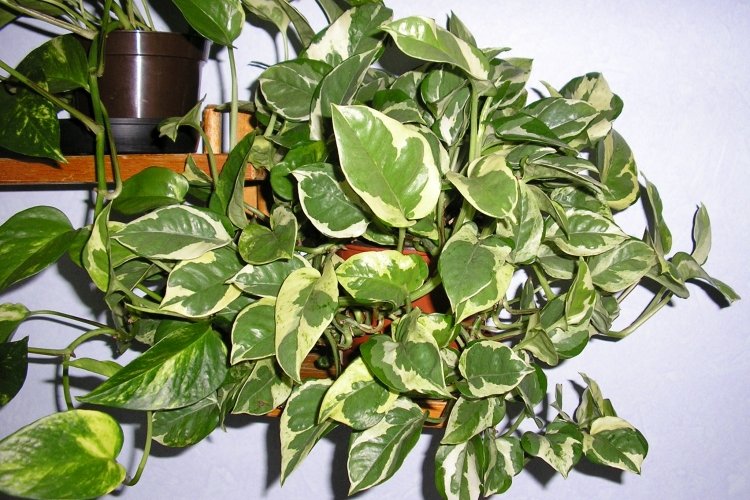
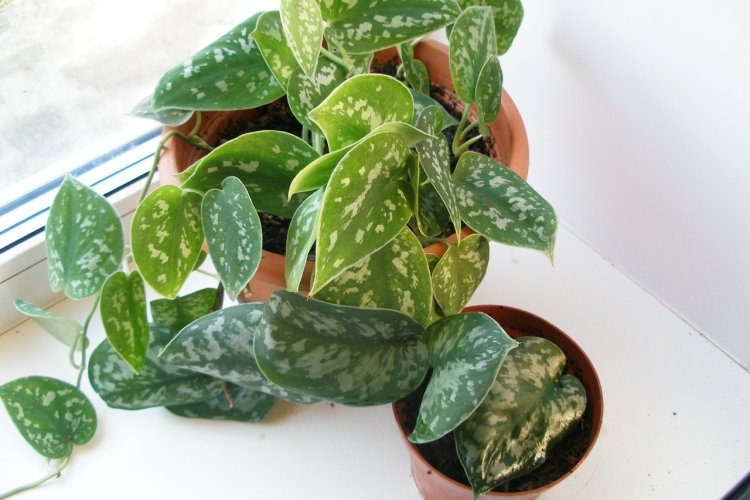
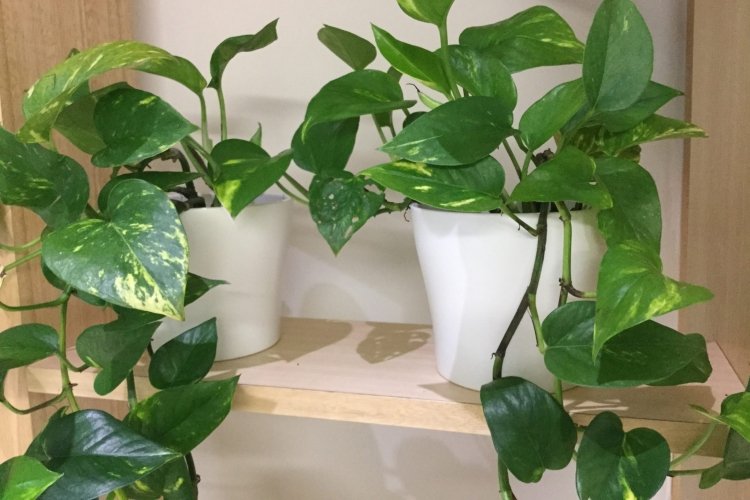
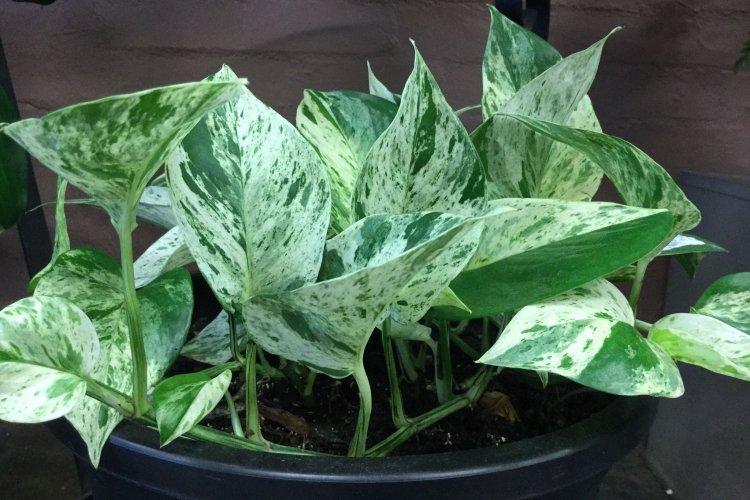
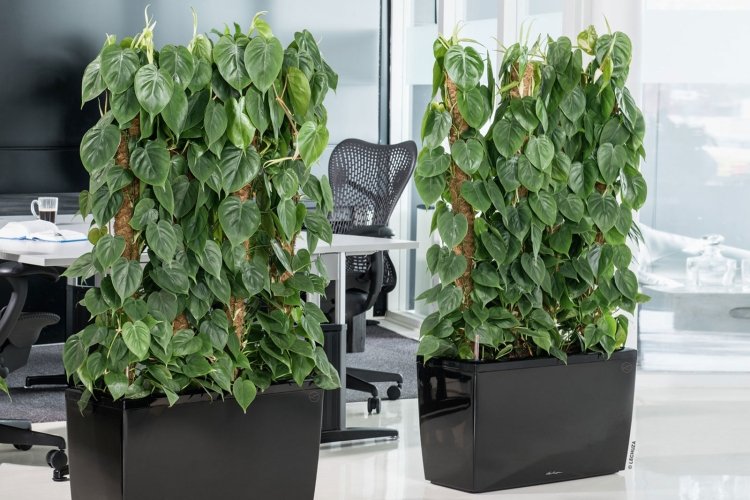
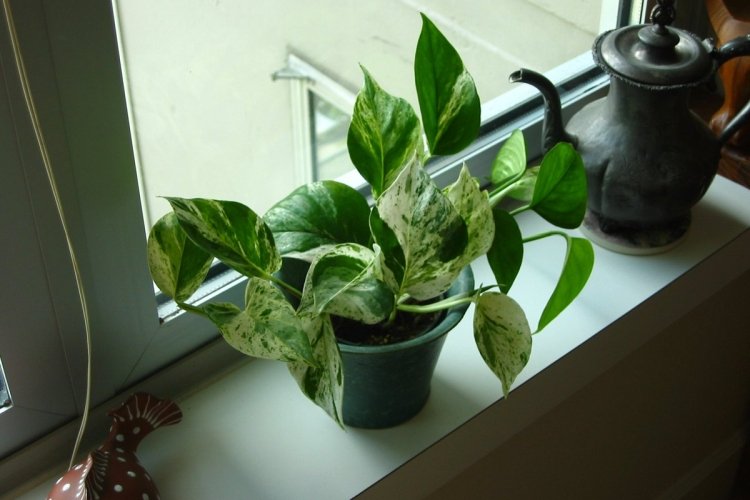
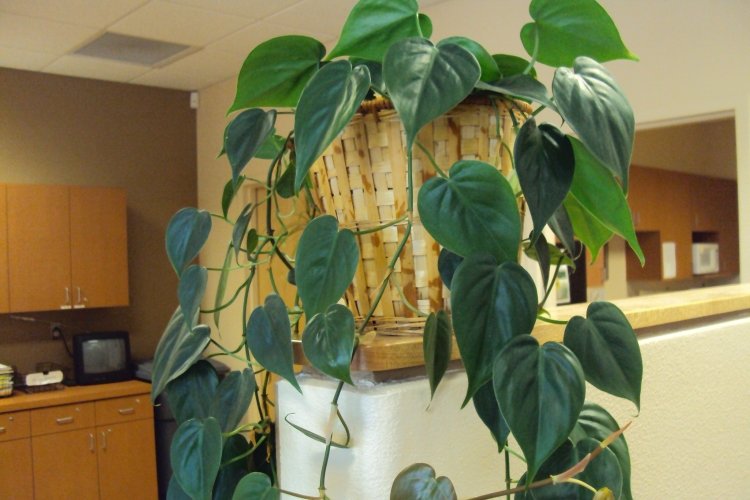
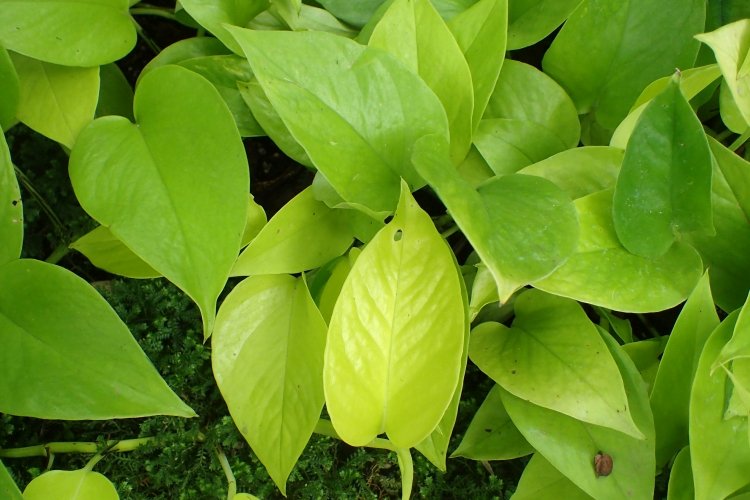
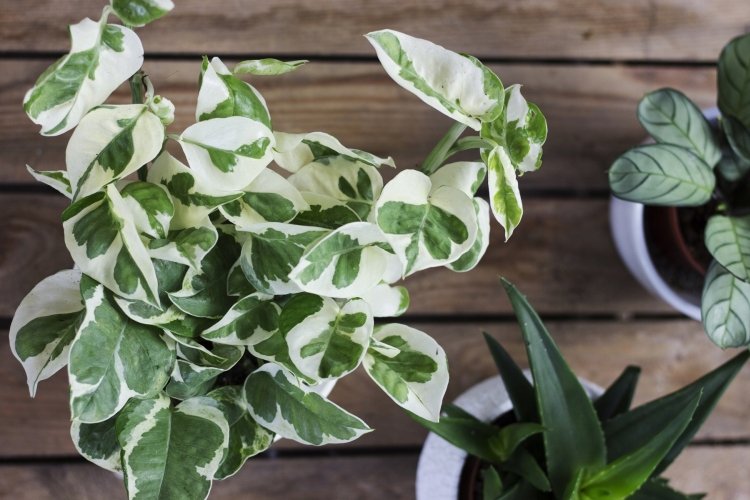
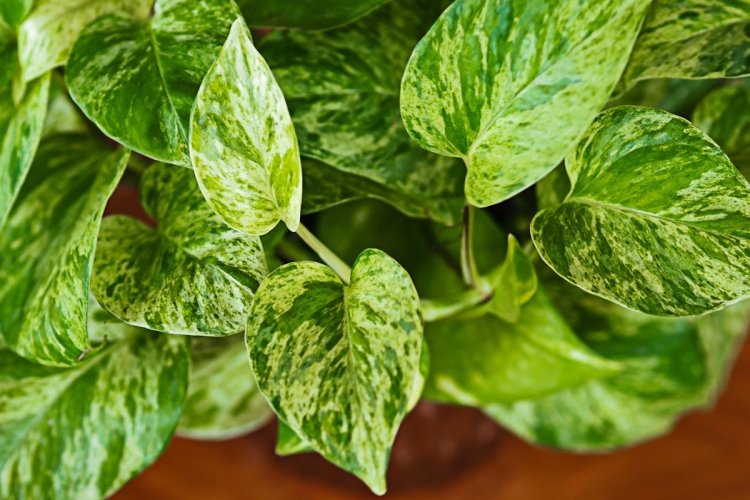
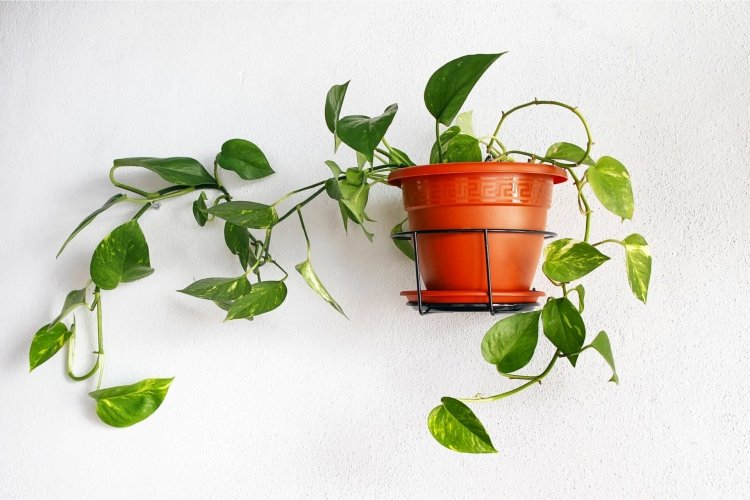
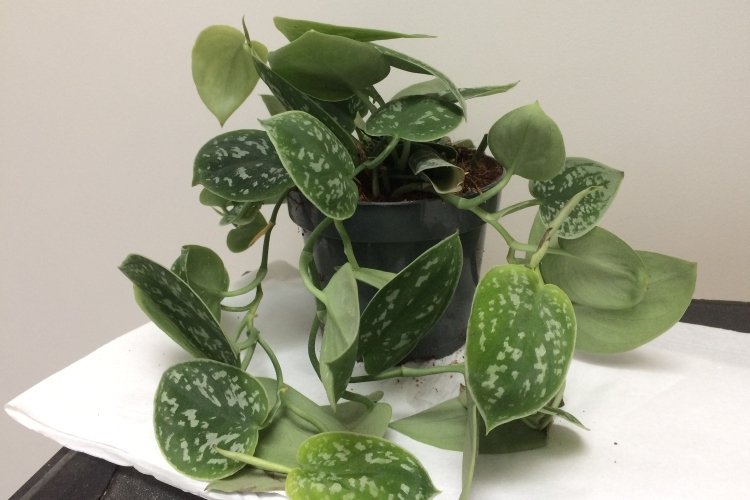
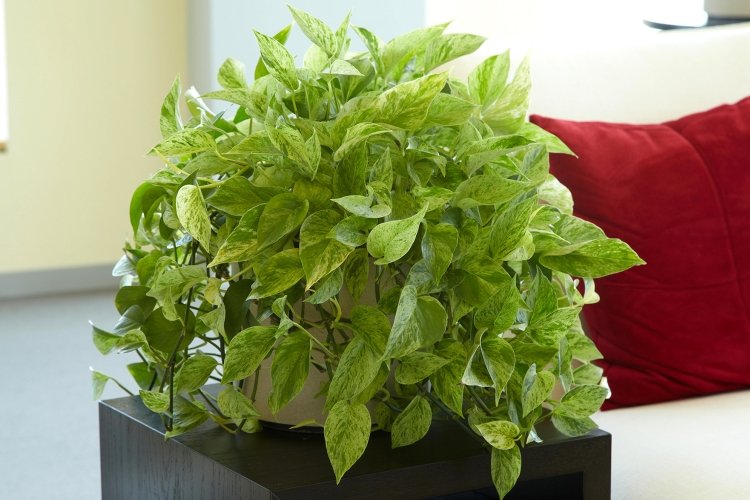
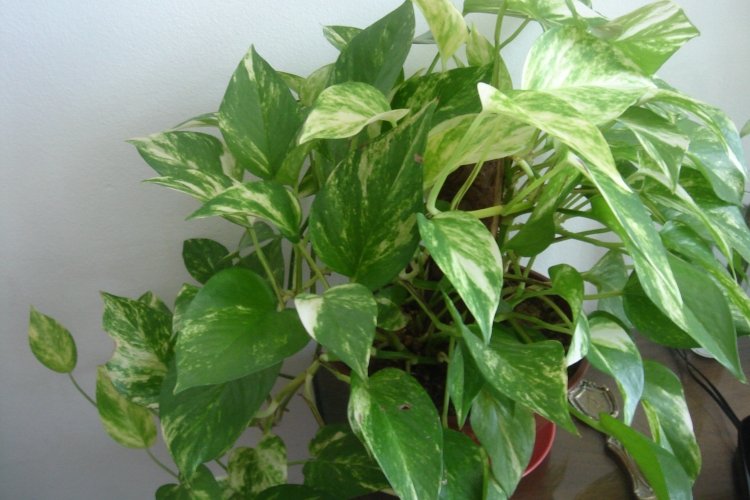
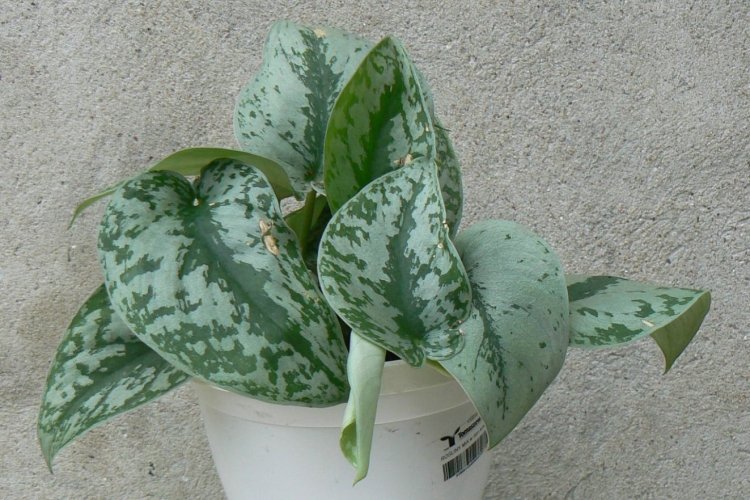
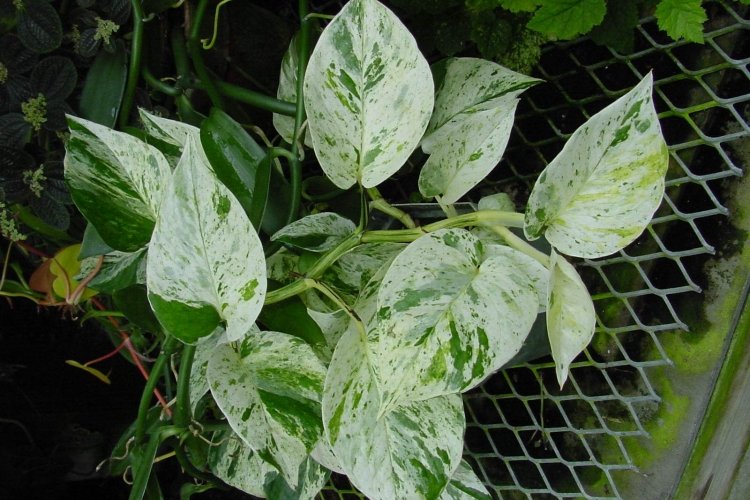
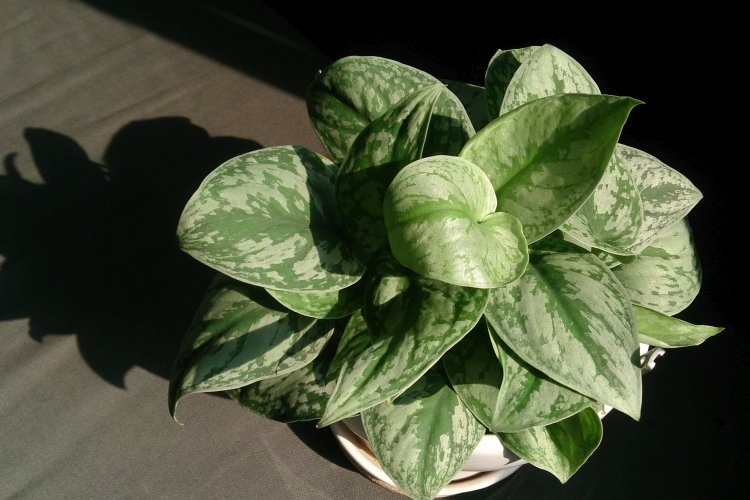
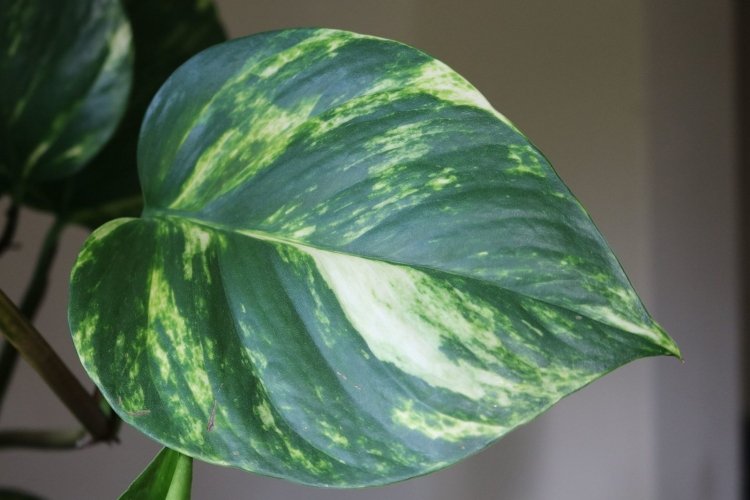
Did you like the publication? Subscribe to our channel in Yandex.Zen, it helps us a lot in development!

